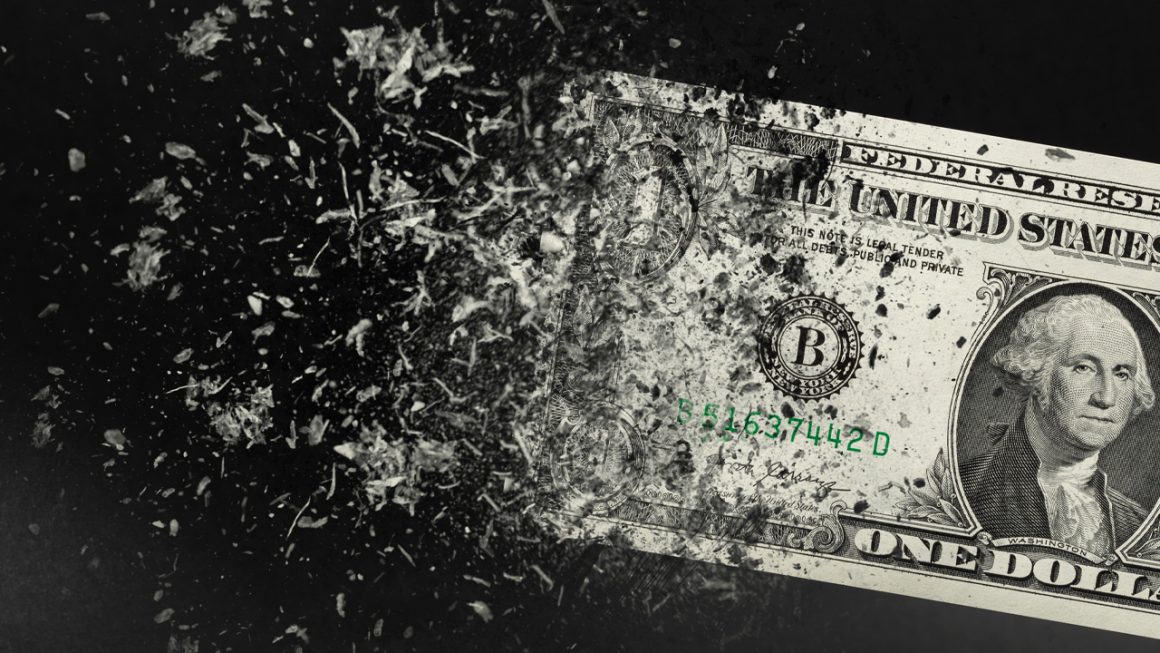According to recently released projections based on inflation nowcasting data from the Federal Reserve Bank of Cleveland, the U.S. Consumer Price Index (CPI) indicator is likely to rise in the future. The newly projected CPI level was recorded on the same day that the U.S. gross national debt surpassed $31 trillion on October 4, indicating that the nation’s debt continues to grow rapidly.
The Fed’s Nowcasting report indicates that inflation may not have peaked, with data predicting a 0.5% rise in core CPI in September and October
Despite the Federal Reserve coming under fire for aggressively raising its benchmark lending rate, the U.S. central bank may be less willing to slow rate hikes if inflation continues to run amok. According to data from the latest Inflation Nowcasting report, September and October consumer price index figures will be higher than expected. Nowcasting in economics is like a weatherman’s weather forecast, as economic indicators use three points in time (the present, the very near future, and the very near past) to predict future results.
The Cleveland-based Fourth District Branch of the Federal Reserve uses nowcasting to predict future inflation increases, and the latest updatewas not a happyone: it predicts a 0.3% month-on-month increase in September and a 0.7% increase in October . The Cleveland Fed’s Inflation Nowcasting Report also showed the core CPI rising 0.5% in both months. Of course, inflation nowcasting reports are merely forecasts, and like the local weatherman, nowcasting is almost always right, and indicators can also be wrong in some cases.
Americans will not hear the September CPI report from the U.S. Bureau of Labor Statistics until October 13. the Fed’s target is 2%, but the August inflation report showed the CPI still running hot at 8.3%. shadowstats.com’s September 13 Alternative inflation statisticsreleased on September 13 showed CPI above 10%. 31} is the CPI data for October 3, 2022, according to the Truflation dashboard, with a year over year rate of 8.67%. Although the shadowstats.com data shows a record high While Truflation statistics indicate that inflation may have peaked at 11.93% on March 11, 2022.
U.S. bureaucrats and central bankers blame the country’s soaring inflation rate on the Covid-19 pandemic, supply chain shocks, and the ongoing Ukraine-Russia war. Many economists blame the U.S. government and the Fed’s stimulus and spending in the aftermath of the pandemic. The Federal Reserve has increased the money supply more in recent years than ever before in history, while the U.S. government has invested trillions of dollars in infrastructure development and foreign aid. Furthermore, on Tuesday, October 4, 2022, the U.S. gross national debt surpassed $31 trillion.
The New York Times (NYT)reported that a U.S. Treasury Department report revealed that the national debt had surpassed the thresholdThe NYT reported that Michael A. Peterson was quoted as saying when he said that government spending could increase if interest rates rise. The Peterson Foundation estimates that higher interest rates could lead to an additional $1 trillion in interest payments being spent by the U.S. government in 10 years.
“A lot of the concerns we’ve had about our growing debt path are starting to come into their own, both as our debt grows and interest rates grow,” Peterson said.” Too many people were happy with our debt path, in part because interest rates were so low.”
What do you think about the Cleveland Fed’s Inflation Nowcasting Report and the national debt, which soared above $31 trillion on October 4? Let us know what you think about this subject in the comments section below.
Image credits: Shutterstock, Pixabay, Wiki Commons

